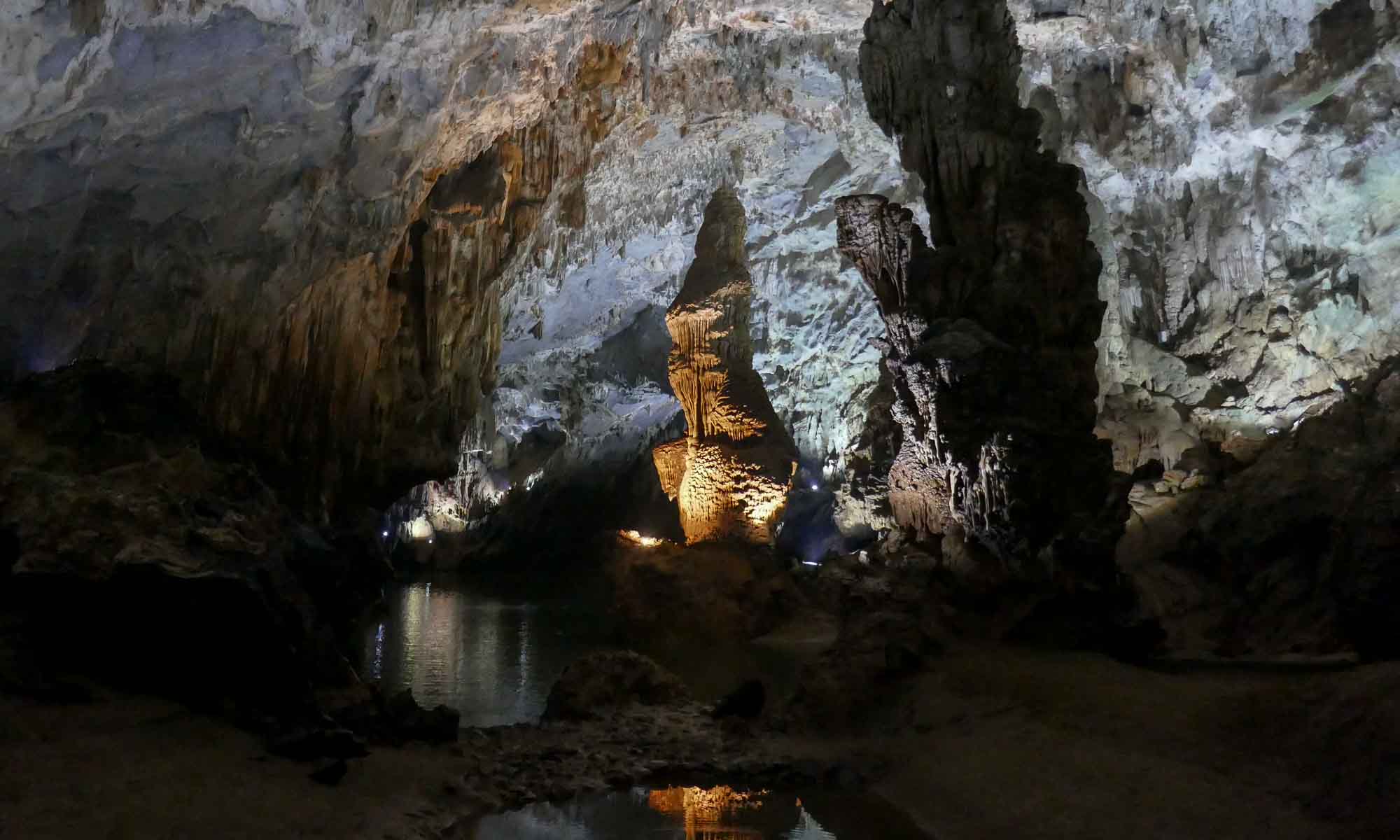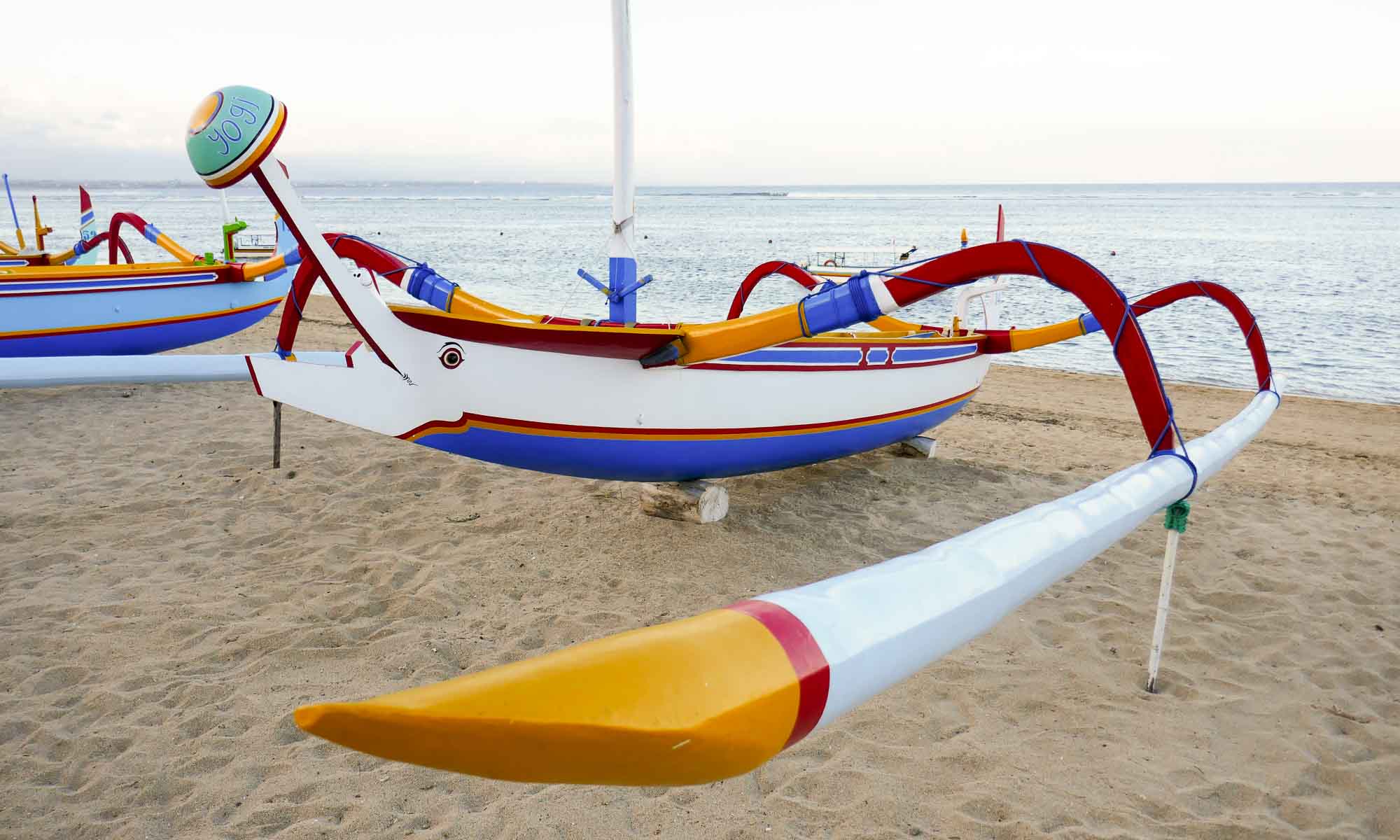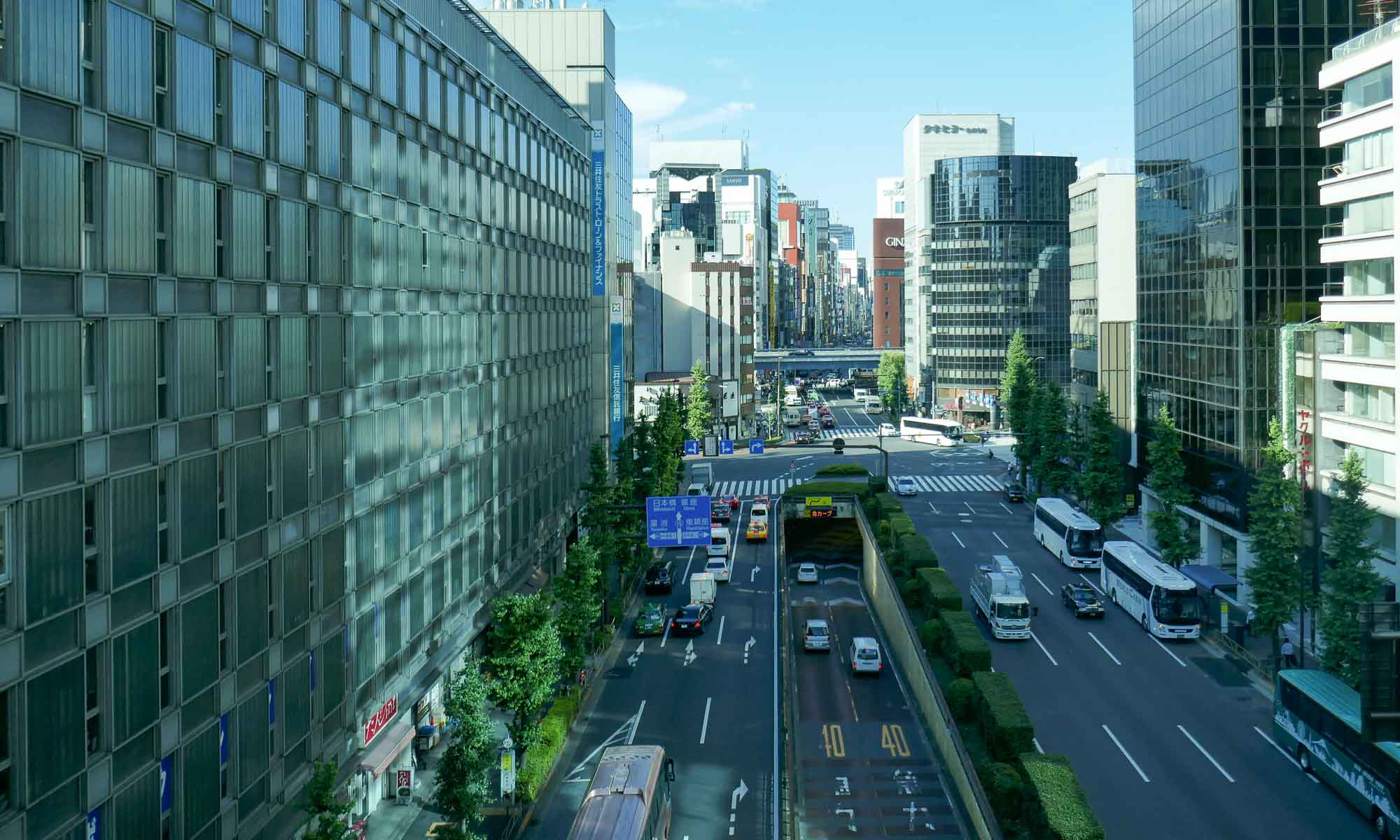Dong Hoi was another city that was a casualty of the Vietnam war, being thoroughly destroyed in 1965. The only structures left standing were the Quang Binh Gate, Tam Toa Catholic Church, a water tower and a single palm tree. Today, it is usually used as a base to see the Vinh Moc Tunnels and the Phong Nha-Kẻ Bàng National Park.


Side trips from Dong Hoi
Truong Son Cemetery
Located on highway 15, just 35 minutes from the Hien Luong bridge is the Truong Son Cemetery. The cemetery was built in 1975 for the soldiers of the North Vietnamese army who had died building and defending the Ho Chi Minh trail (Ho Chi Minh trail) with enough space for 30,000 graves. Currently only 13,000 remains have been found.
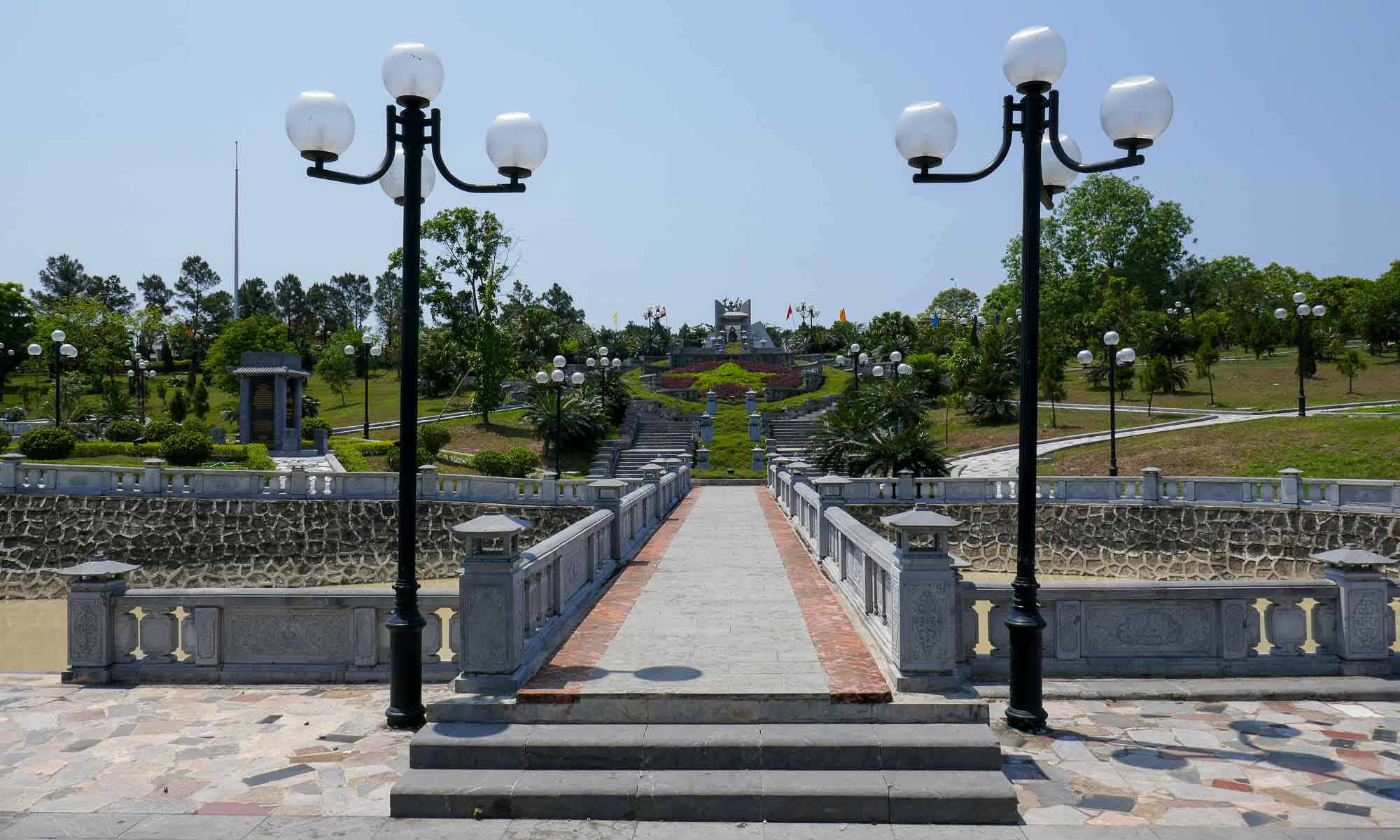
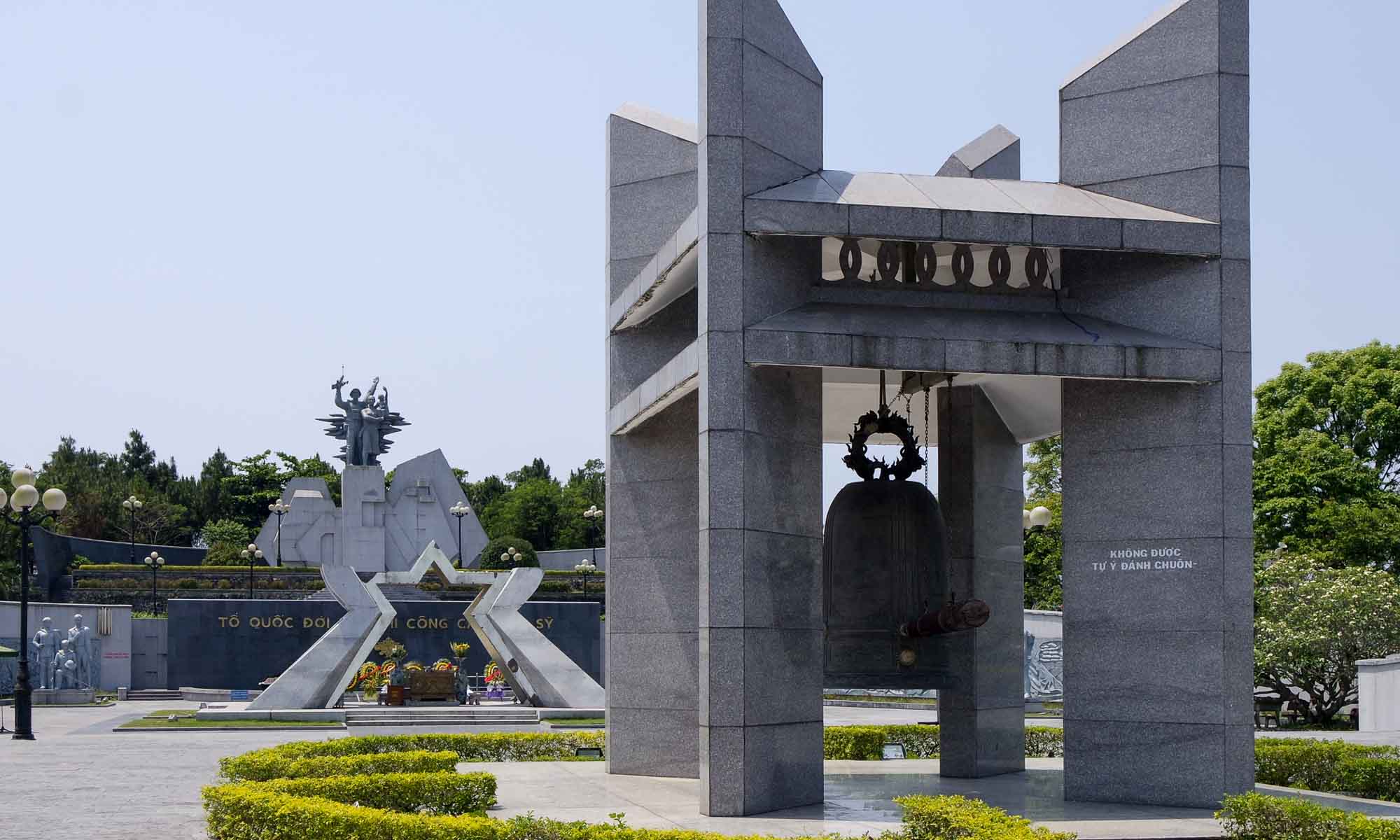
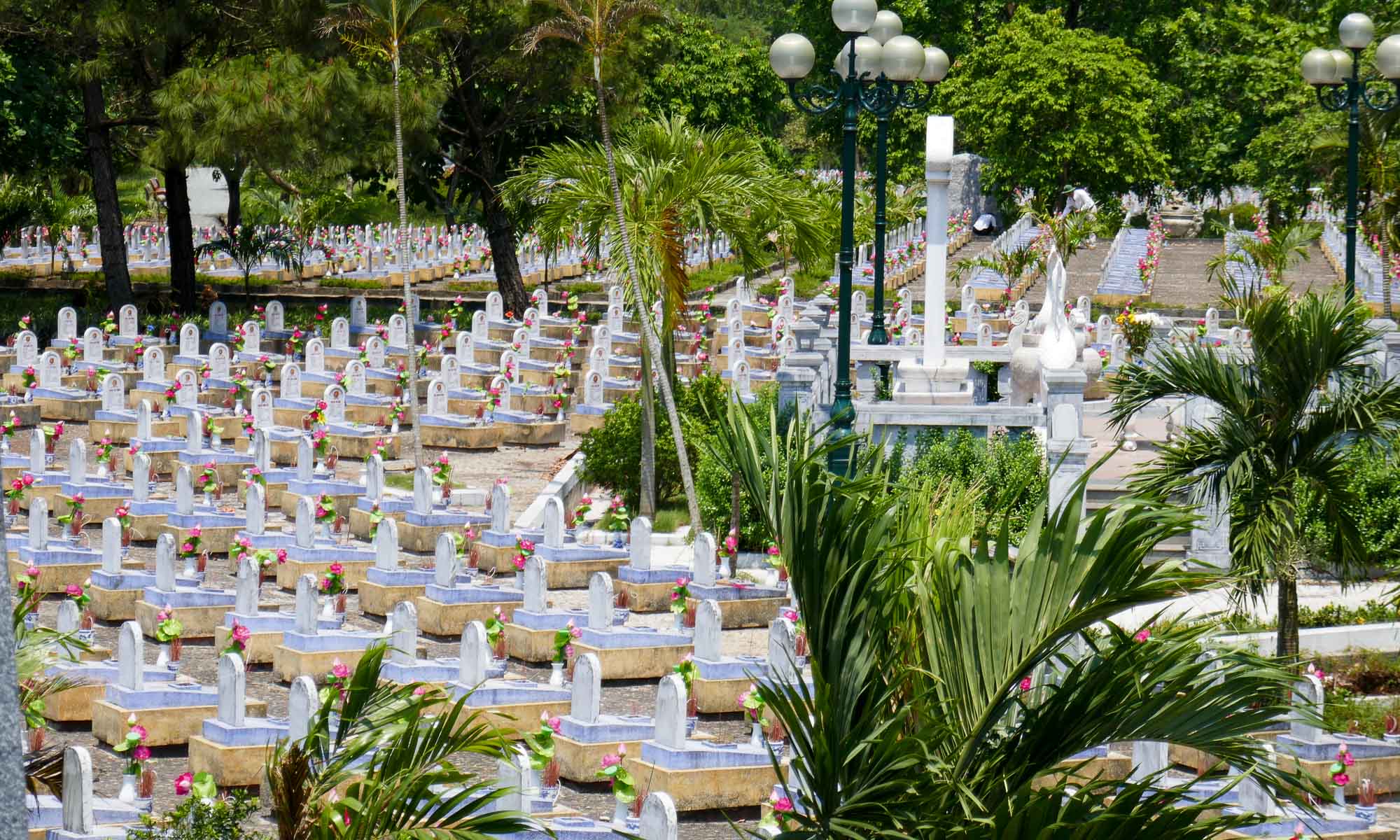
Hien Luong Bridge
Heading north from Hue, our next stop was at the Hien Luong bridge. In accordance with the 1954 Geneva Accords (Geneva Accords), which brought an end to the first Indochina war and the withdrawal of France from Vietnam, the country was to be divided along the 17th parallel (17th Parallel) until elections could be held. The actual location of the demarcation line was along the Ben Hai river which was south of the 17th parallel. The Hien Luong bridge crosses the river at the spot of the border, and has been painted in two different colours since the separation of Vietnam. It was initially built by the French in 1952 but was destroyed in 1967 and restored in 2002. A new wider bridge has been built which is used by cars, while the restored bridge is now just a pedestrian bridge.
On the southern bank of the river, is the Desire for National Reunification monument. The whole area was deserted when we arrived, and we were able to walk across the bridge to meet our driver on the other side.
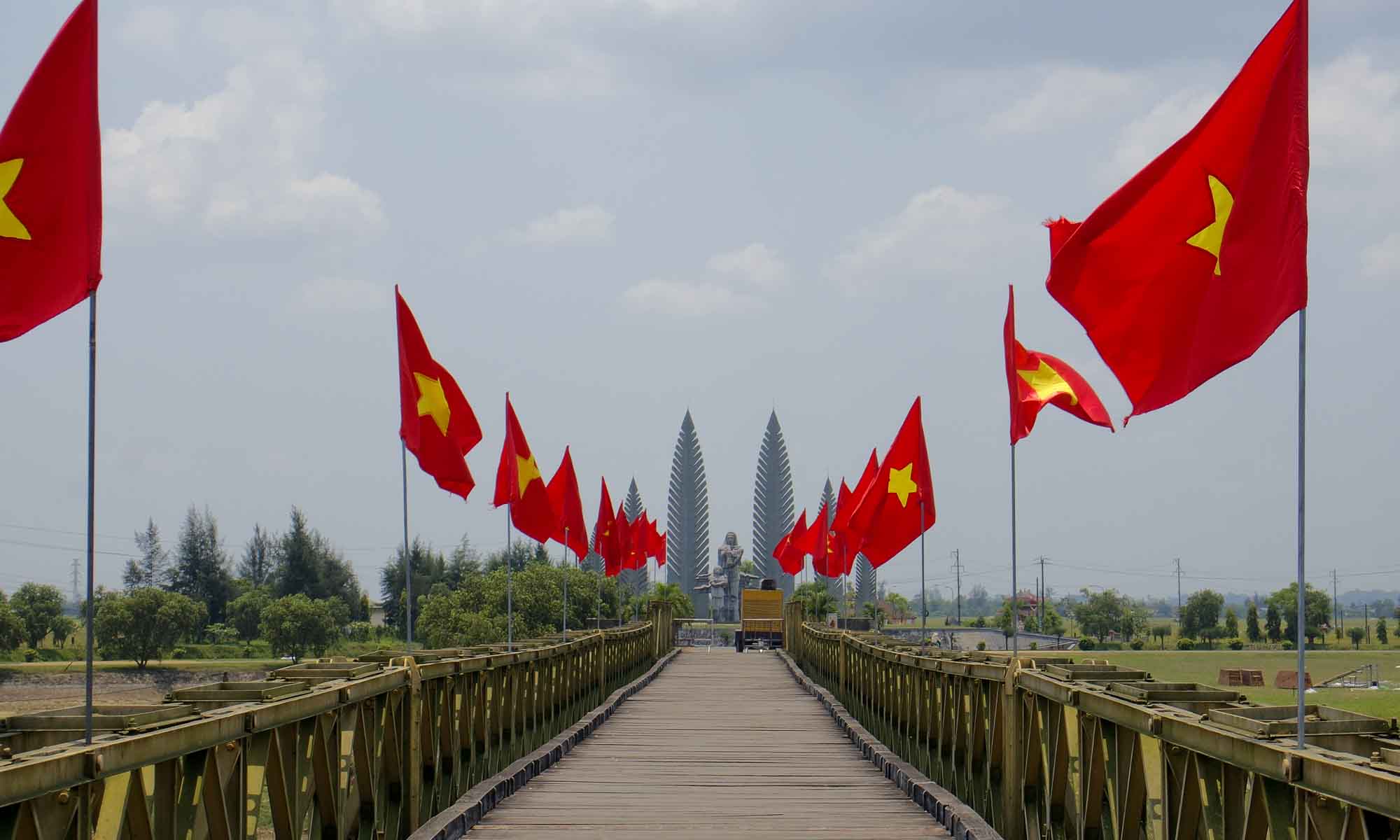
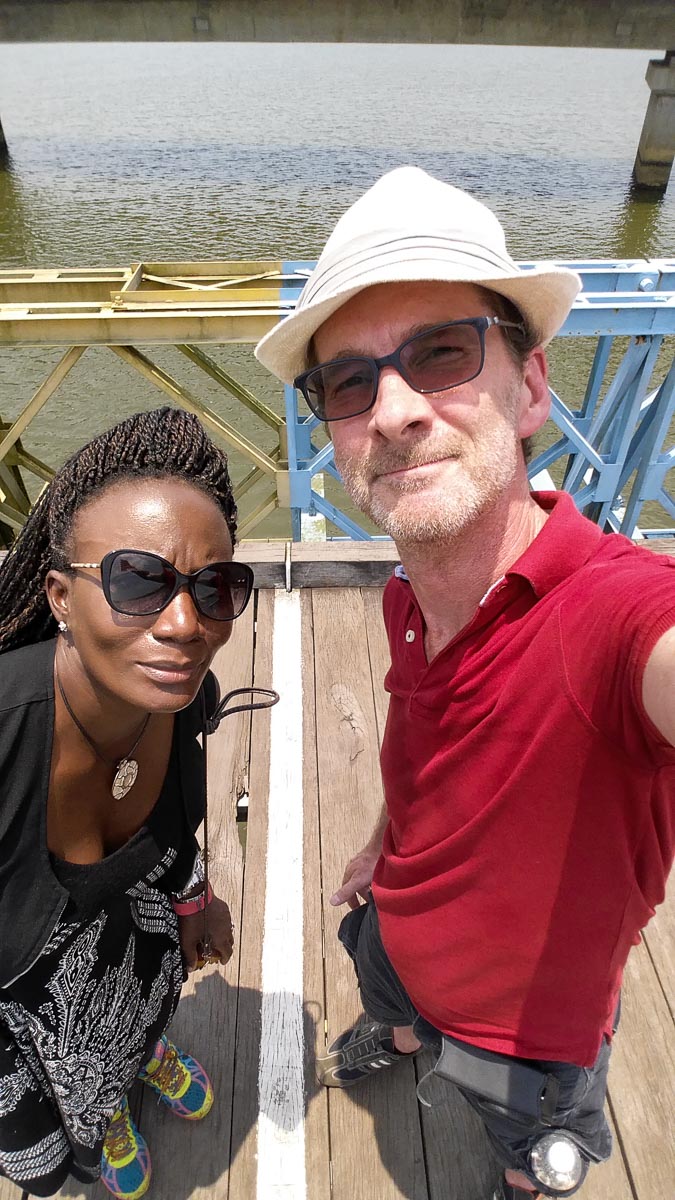
Getting to the bridge
The bridge is located in Vinh Thanh village about 2 hours from both Hue and Dong Hoi. Our hotel in Hue assisted in reserving a private car with driver to take us to the bridge and the tunnels with a drop off in Dong Hoi. There are also tours which we could have taken from Hue, though we would have been restricted in our movements.
Private car cost: $75
Vinh Moc tunnels
Further up along the road we stopped at the Vinh Moc tunnels. The Vinh Moc tunnels are different from the Cu Chi tunnels we visited close to Saigon, as these tunnels were not used by the Viet Cong but instead were used by civilians who lived in Vinh Moc, to escape the terror of the war.
Being close to the bridge and DMZ zone the village was in an unfortunate location. The tunnels were built between 1967 and 1968 with very basic tools, and were used as bomb shelters where life continued for the duration of the bombing. The villagers ventured out of the tunnels only to attend to their farms. The tunnels were definitely an engineering feat and are in three levels with 13 different entrances, some leading out to the sea.

We had planned to get a guide at the tunnels, but when we arrived it appeared they were all on siesta. However, we were able to link up with two other travelers who had come with a guide and were kind enough to allow us to tag along. While there are lights in some parts of the tunnels, a number of sections are pitch black, and with the guide we were able to ensure that we did not get lost, and to visit several areas of the tunnels. What was remarkable to see was that within the tunnel system they had basically included the essential components of a village, such as hospitals, offices, and supply centres (stores), in addition to those of a typical home.
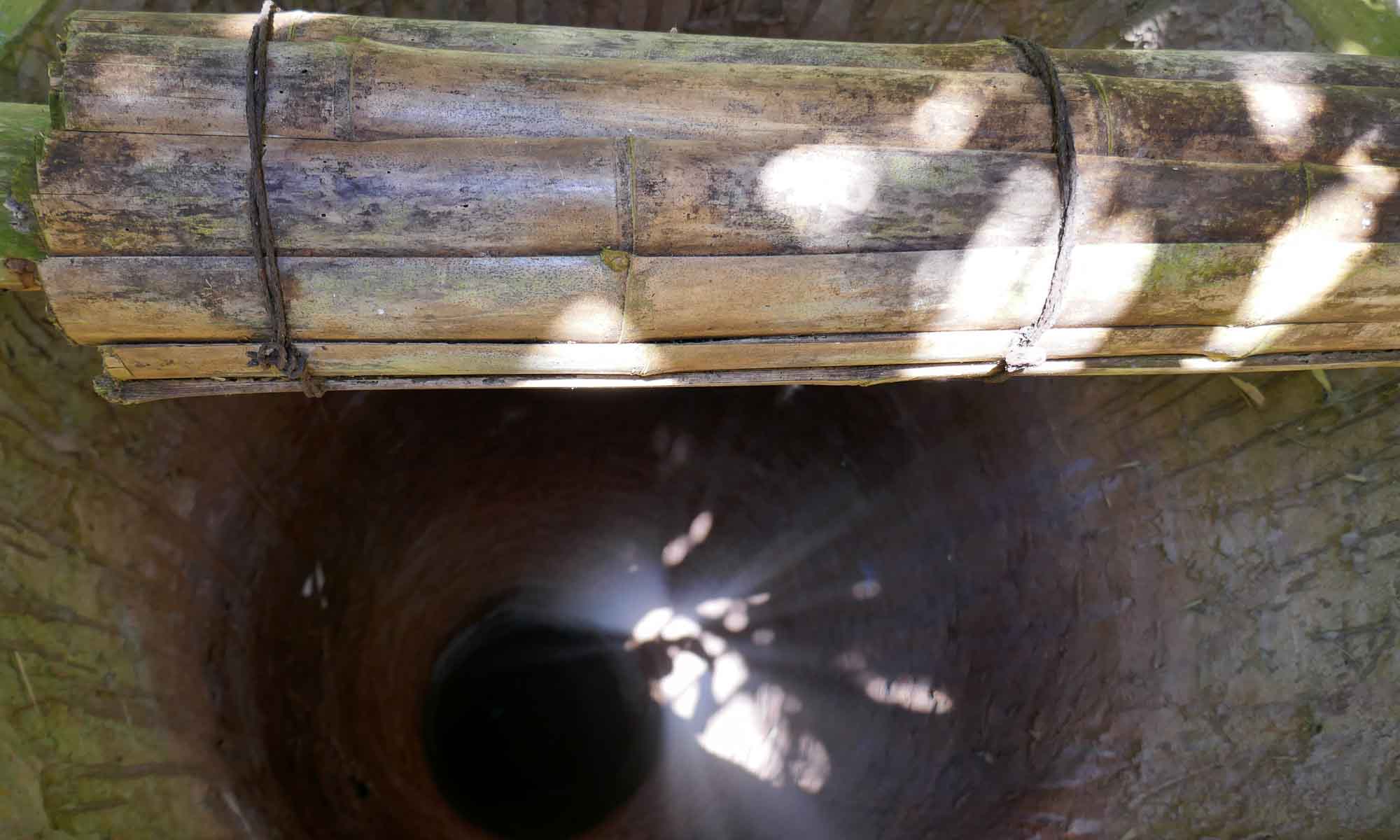
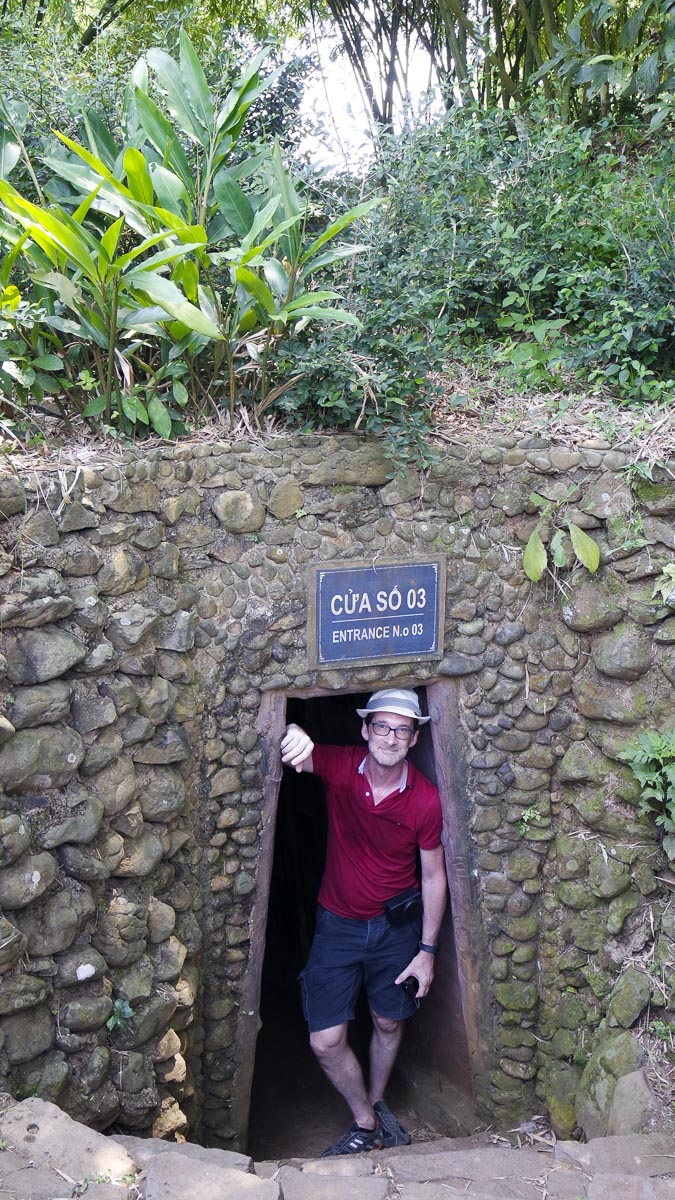
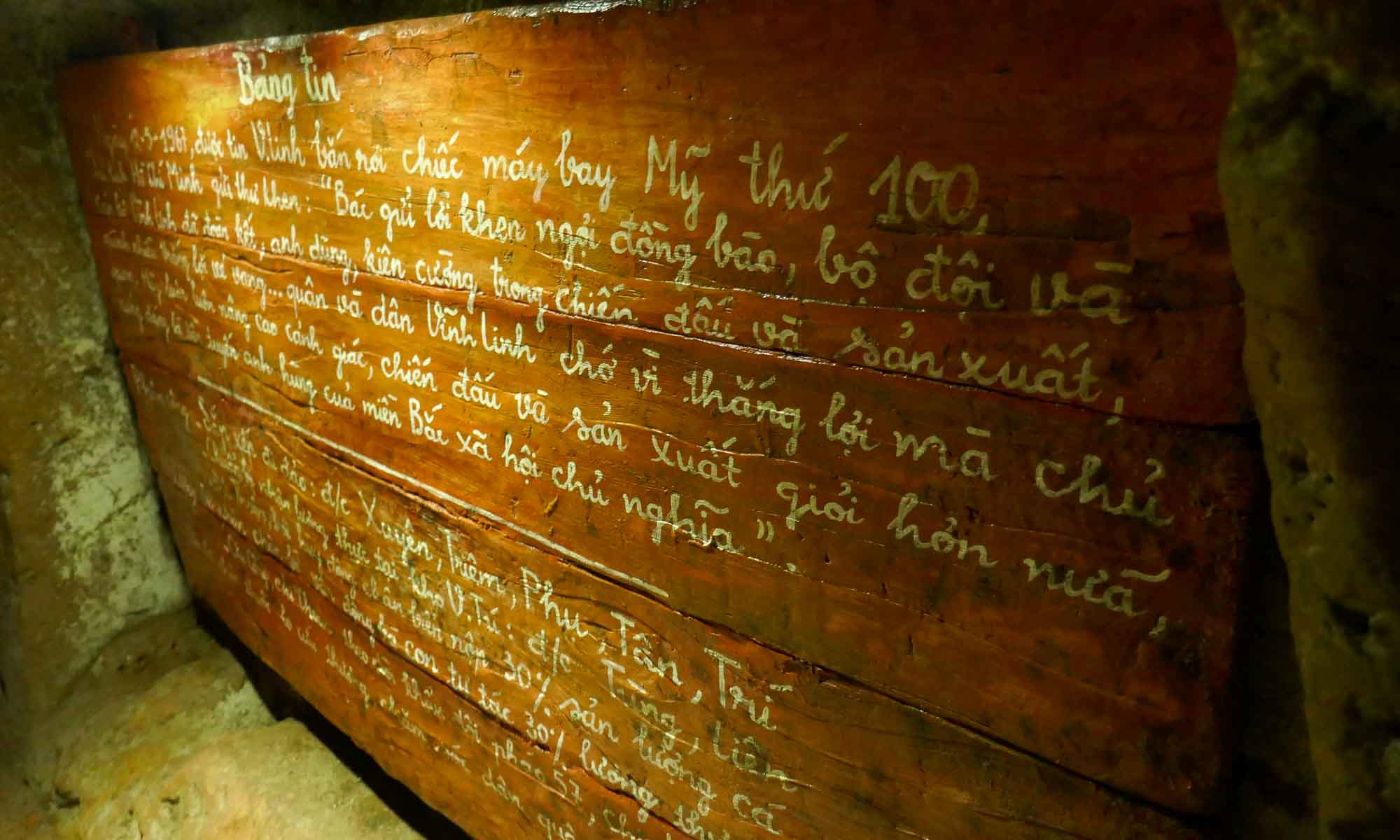
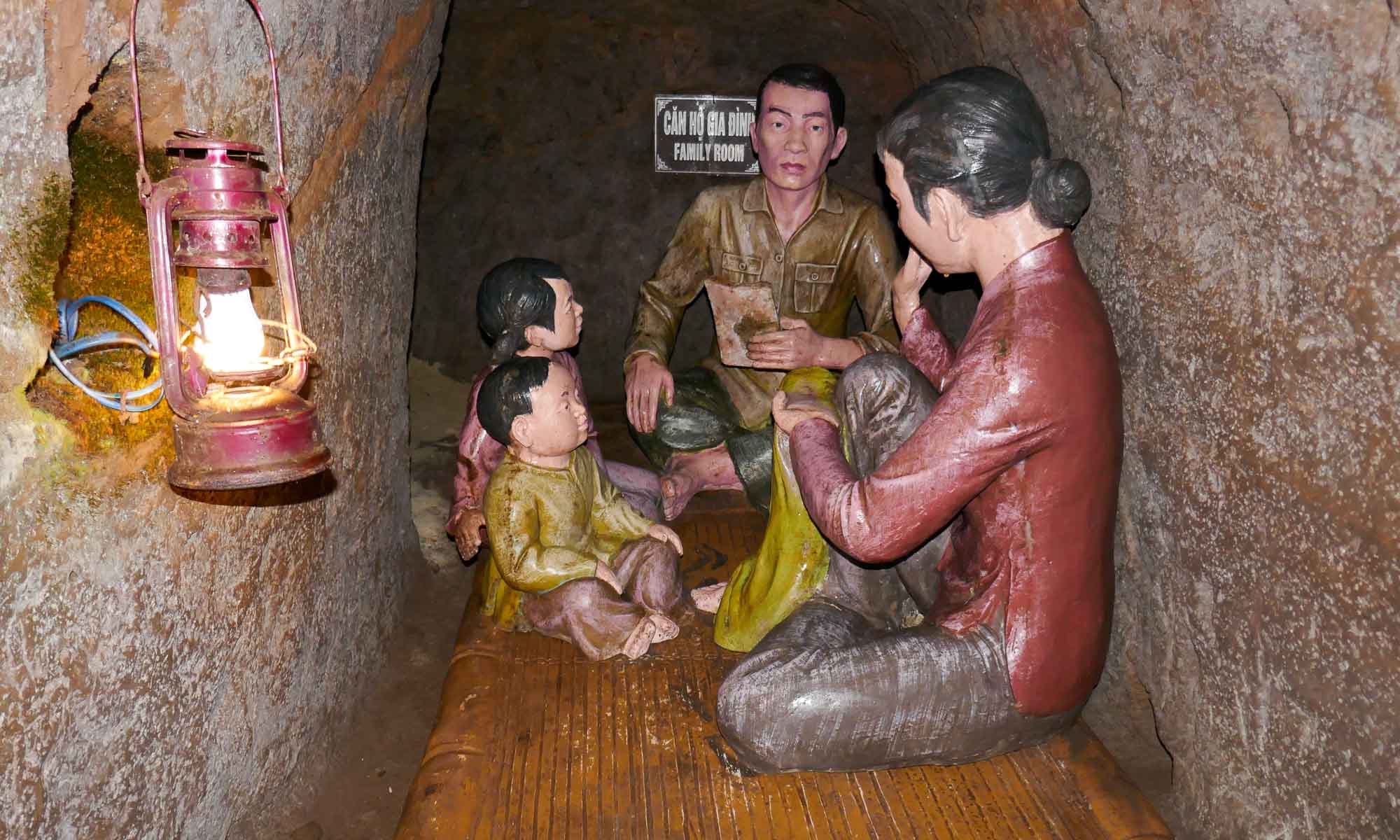
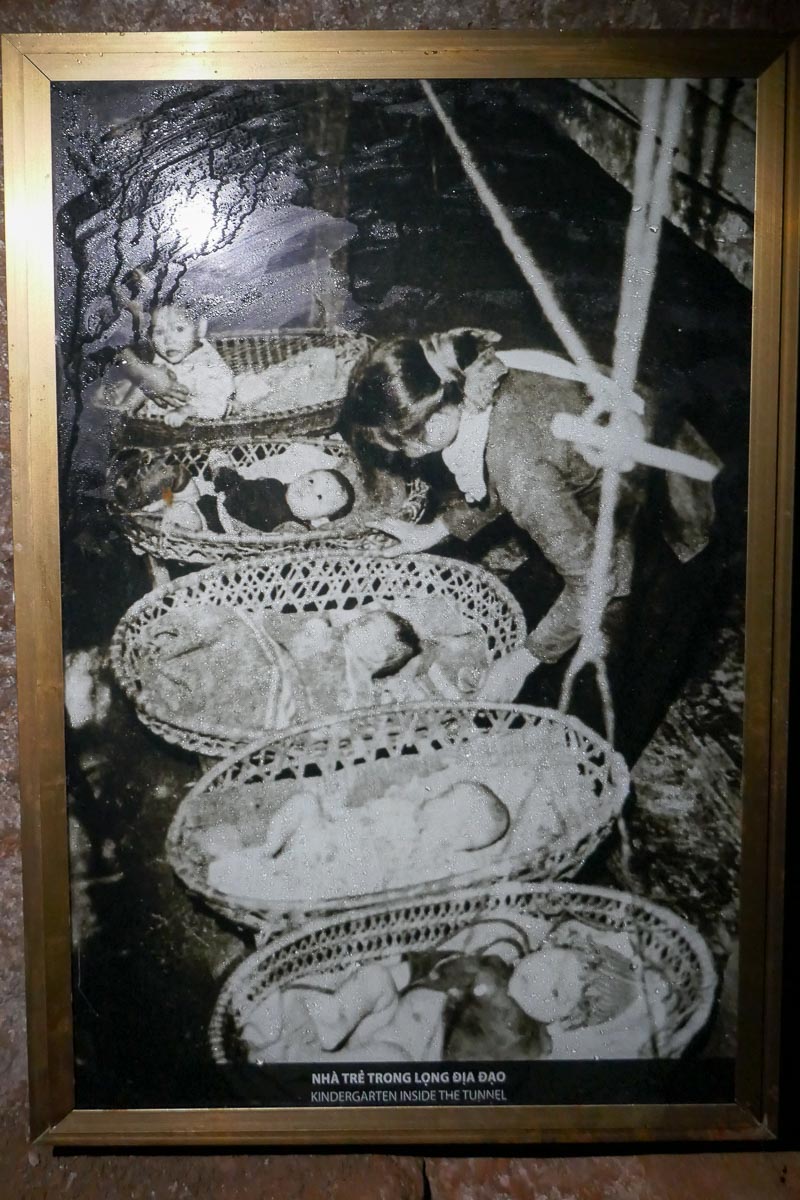
Admission fee: VND 40,000; Guide: VND 50,000 (paid to the couple that allowed us to join their private tour)
Getting to the tunnels
The tunnels were located barely 30 minutes from the Hien Luong bridge.
Phong Nha-Kẻ Bàng National Park
Visiting Vietnam we were keen to witness the natural beauty of the country, and not just stick to the cities. This was one reason we decided to venture into the national park. The national park was opened to the public in 2010, and was declared a UNESCO World Heritage Site in 2003. The park is situated in a zone of over 2,000 square kilometres of limestone and tropical forest with over 300 caves and grottos.
The park is known worldwide for its caves, and for what is thought to be the largest cave in the world, Son Doong. The largest part of Son Doong is over 5 km in length, 150m wide and has a height of 200m. The cave opened to the public in 2013, and can only be visited on a guided our, planned several months in advance, at a cost of over $3,000. Not being serious cave enthusiasts, we settled for visiting the Phong Nha cave (after which the park is named) and Paradise cave.

Paradise Cave
Paradise cave is thought to be the longest dry cave in the Asia at 31 km. It was discovered by a local man in 2005, and opened to the public in 2010. The cave is thought to resemble a cathedral and areas within reach a height of over 100 m.
To beat the possible crowds, we set off early and were fortunate to be met by an almost empty car park. From the parking lot, it is about 1km to the bottom of the steps leading up to the entrance. Golf carts were on offer for a price, but we chose to walk. In our view it was not worth it to get on the golf carts, as the hard work came afterwards. To get to the entrance, we walked up a steep ramp for about 10-15 minutes which was the easier option than climbing up the over 500 stairs. After either climbing up in the heat, the cool air flowing out of the cave was greatly appreciated.
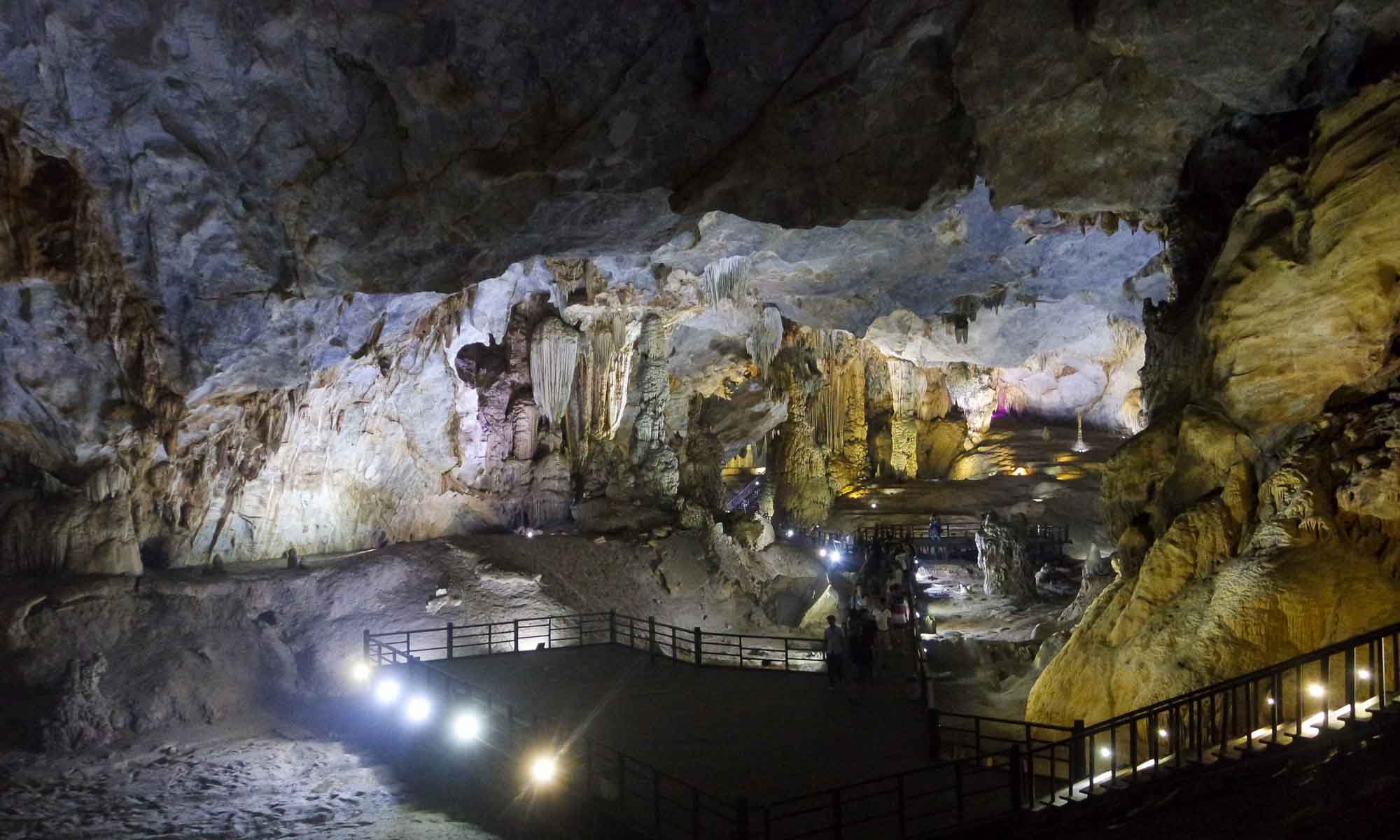
As soon as we stepped into the cave, there were several jaw-dropping moments, which only increased as we walked along the boardwalk for about 1km. Interestingly, at the end of the boardwalk, a number of people climbed down into the cave, put on hard hats, and kept walking deep into the cave. We found out that there is an option of a 3.5 km guided trek into the depths of the cave.
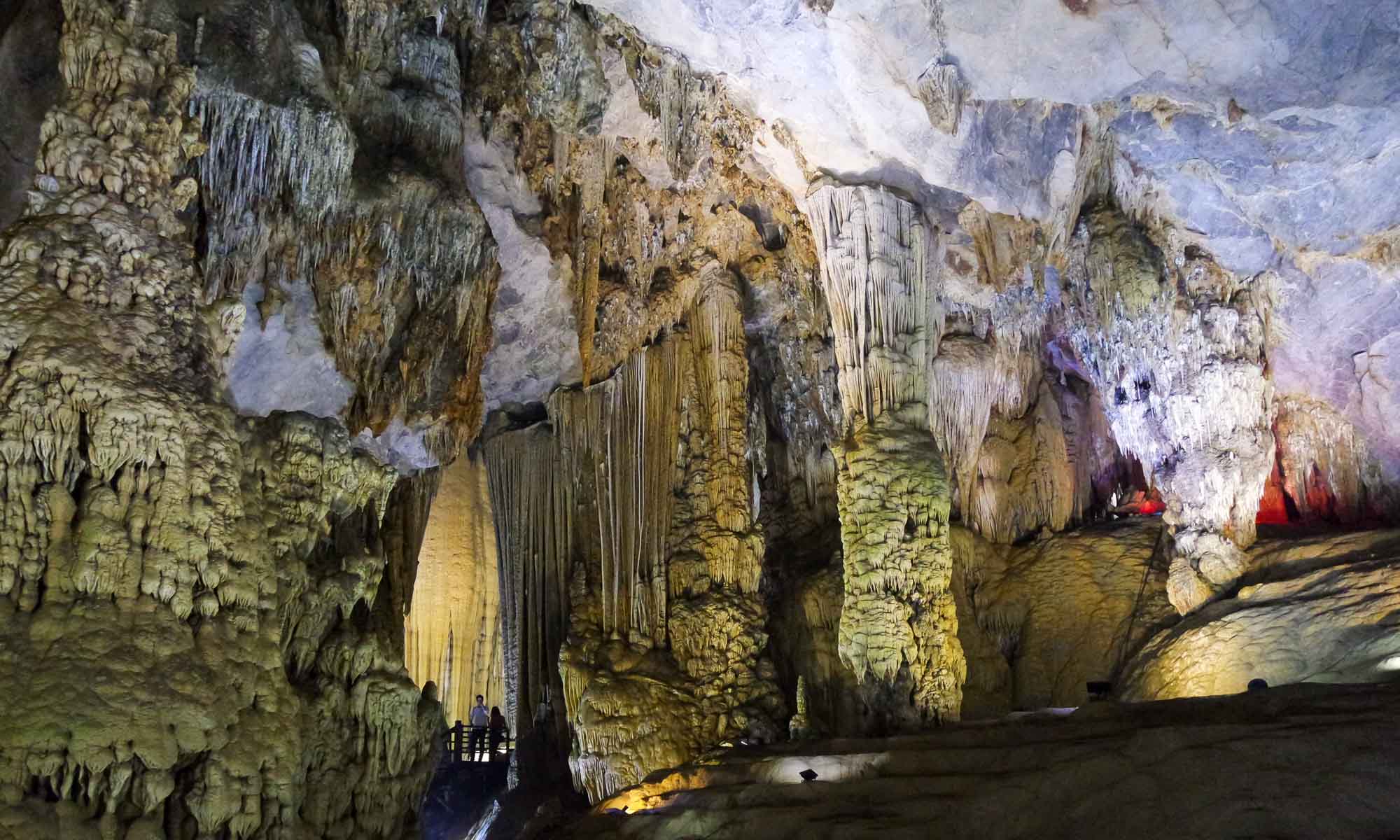
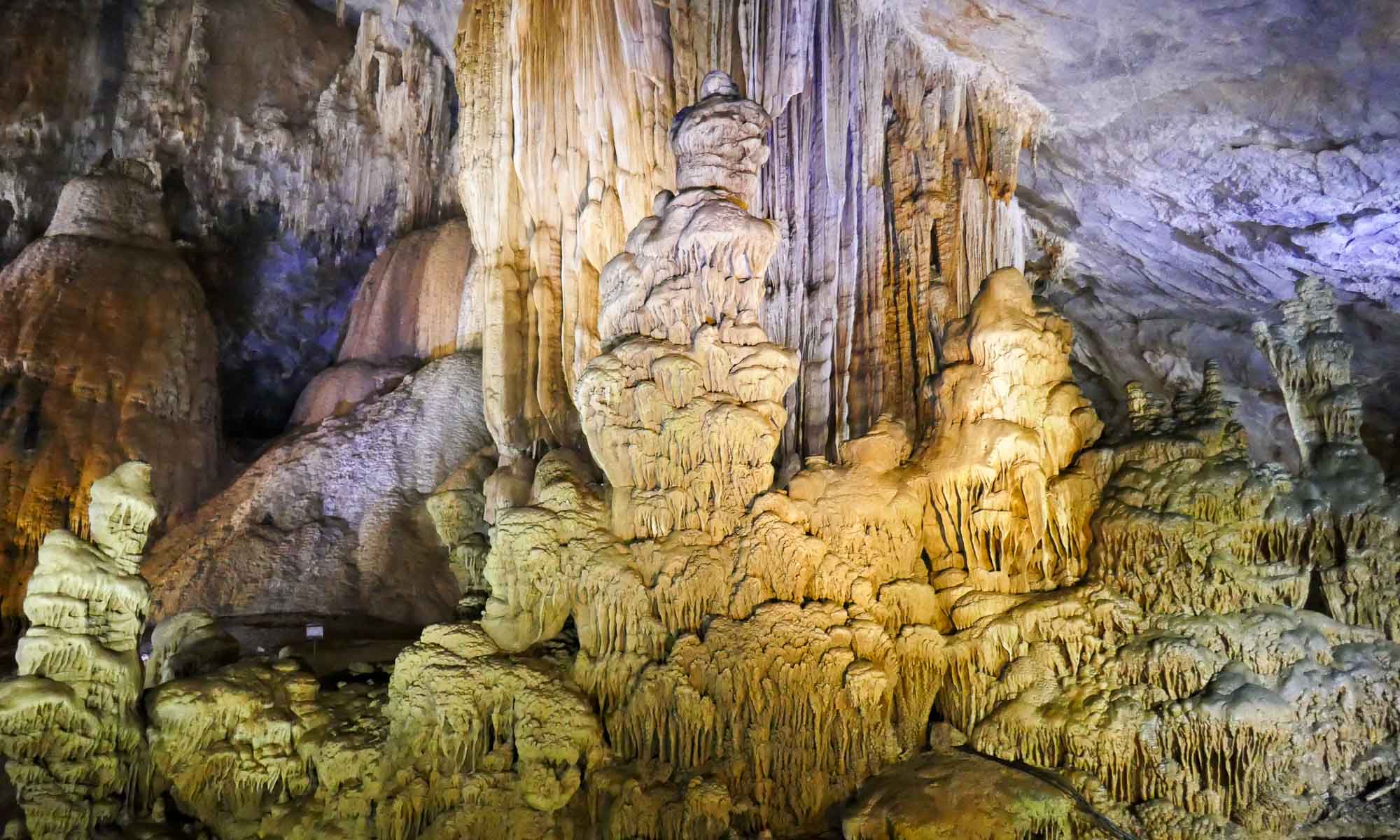

Cave admission: VND 250,000 Golf cart: VND 100,000 (roundtrip)
Phong Na cave
Prior to the discovery of Son Doong cave, Phong Na cave had been considered as being one of the best caves in the world, with the longest underground river, the broadest sand beaches in the cave and the most impressive stalagmites and stalactites. So far about 44 km of grottos have been explored in the cave, but the public is only able to see 1.5km.
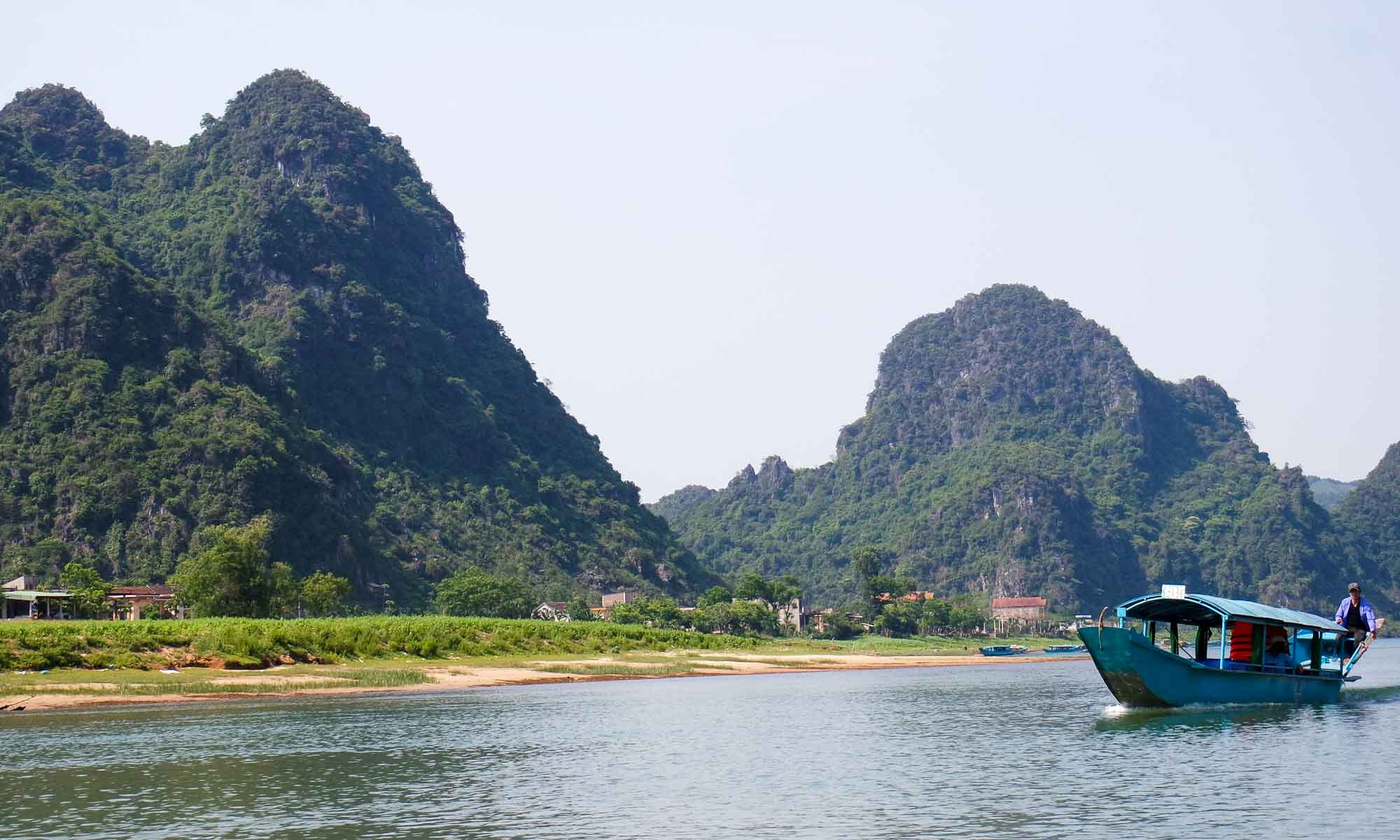
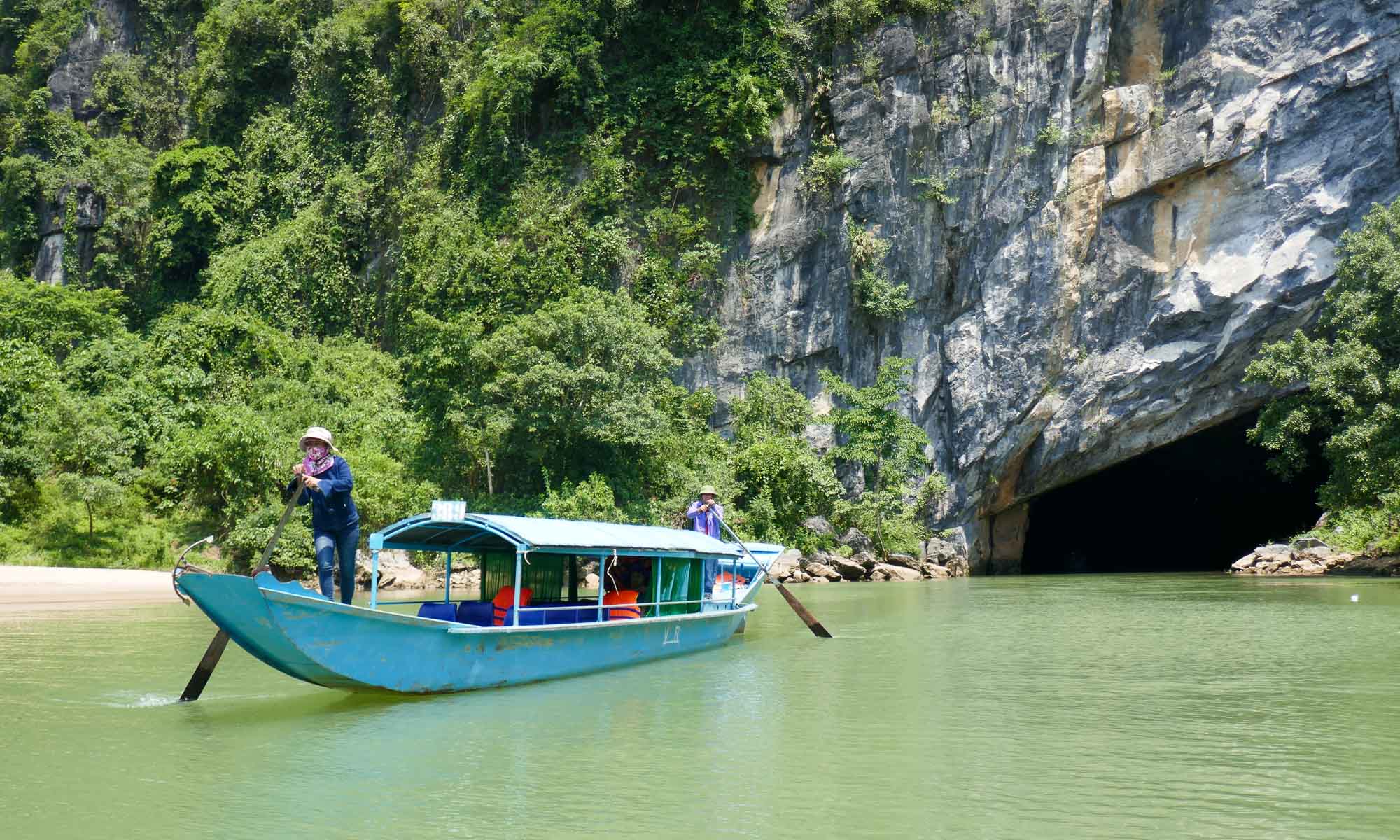
The journey to the cave is part of the experience. We hired a boat from the Phong Na boat pier which we were able to share with 3 other people and thus split the cost. This is always the best option, though the less the number the better, as once we entered the cave, everyone was vying for the best spots to take pictures. The ride from the pier takes about 30 minutes, and the scenery is totally breathtaking. As we visited early, there were not too many other boats on the river. At the entrance of the cave, the boat engines were switched off, and the paddles came out. The view in the cave was absolutely out of this world, and one which pictures cannot convey the beauty. We were rowed about 1.5 km down into the depths of the cave, after which the boat turned around and we were able to get out to walk amongst the stalagmites and stalactites. The absolute majestic nature of several of the stalactites was a sight to behold. For us this was the highlight, not being on a boardwalk but being able to wander at will. Instead of the usual multi-coloured lighting seen in some caves, here were just subtle white lights.
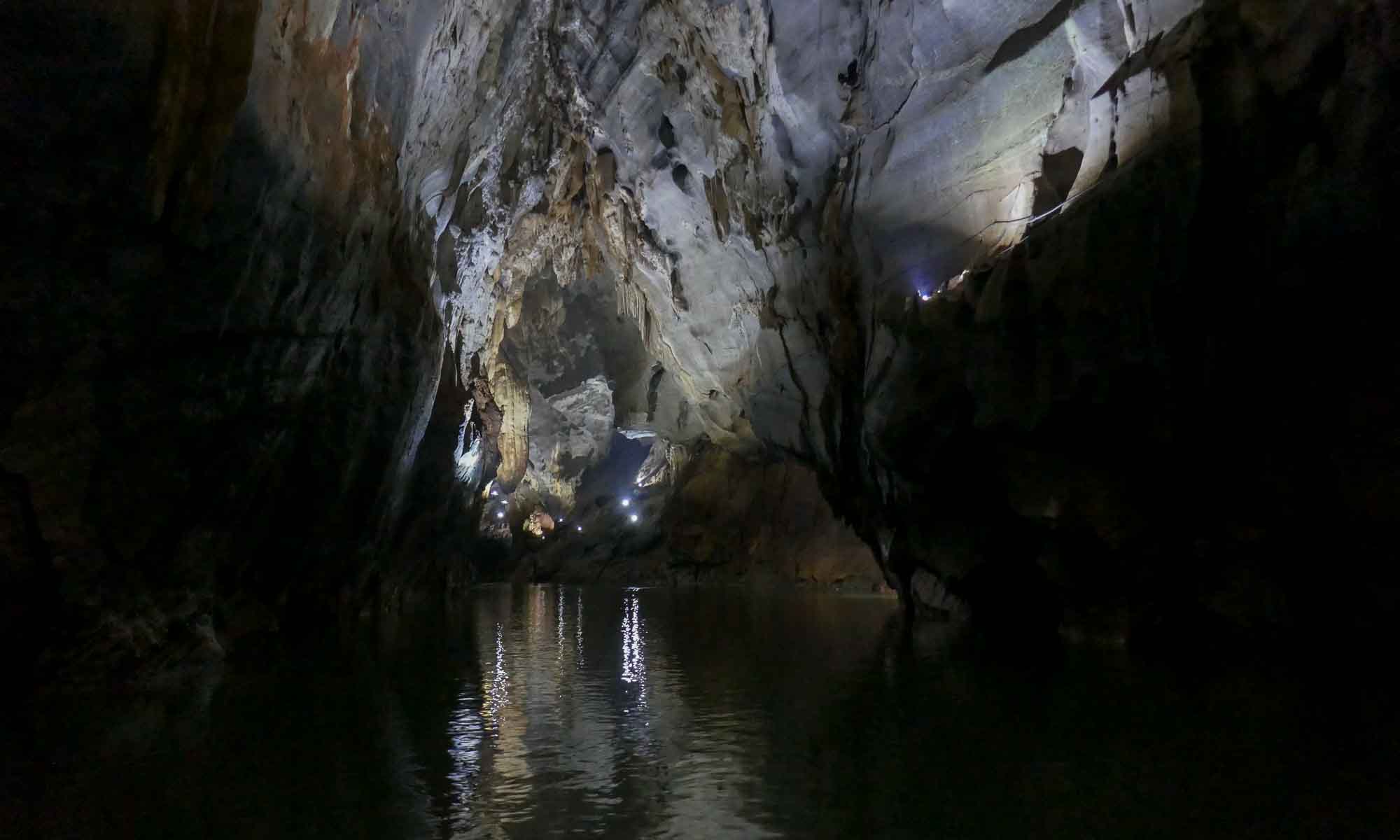

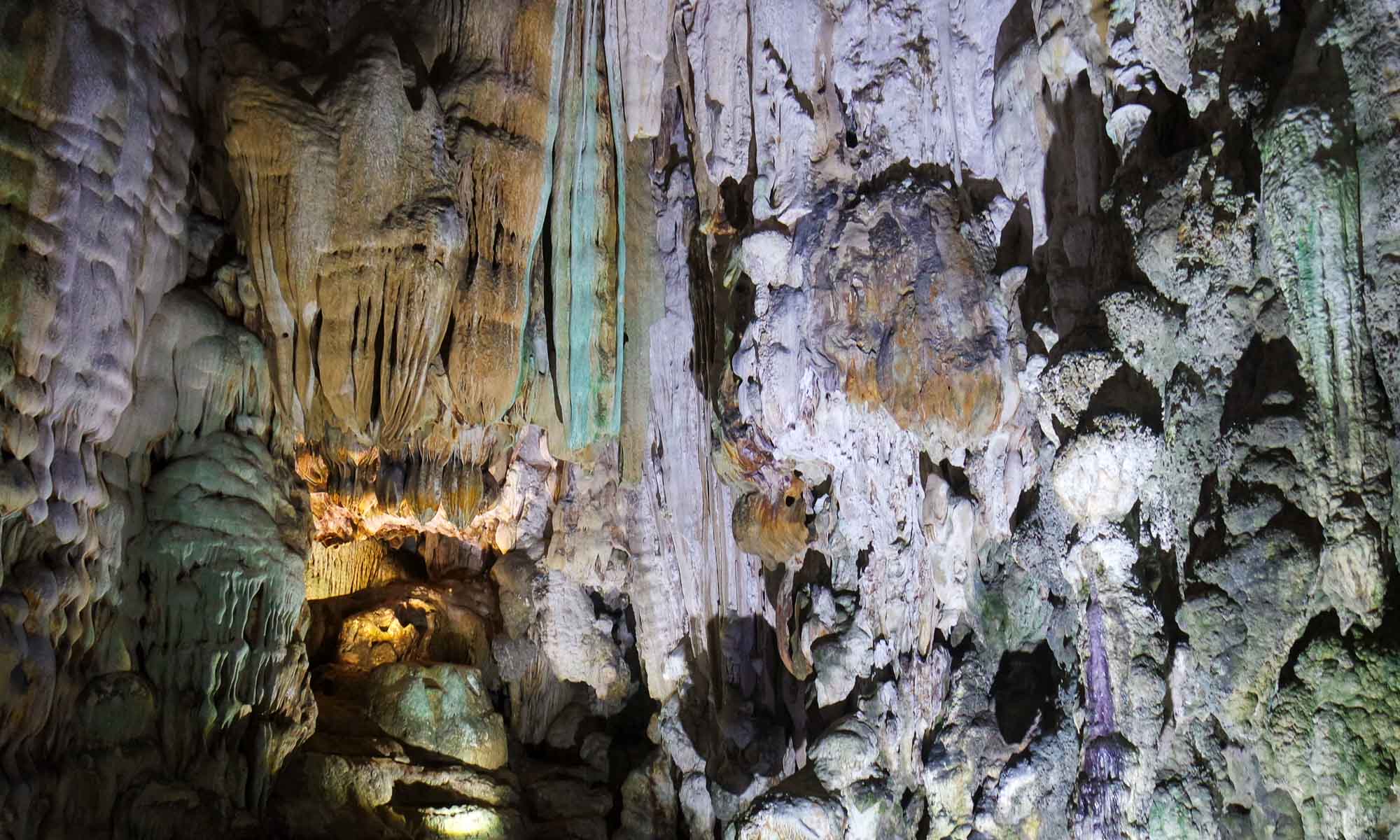
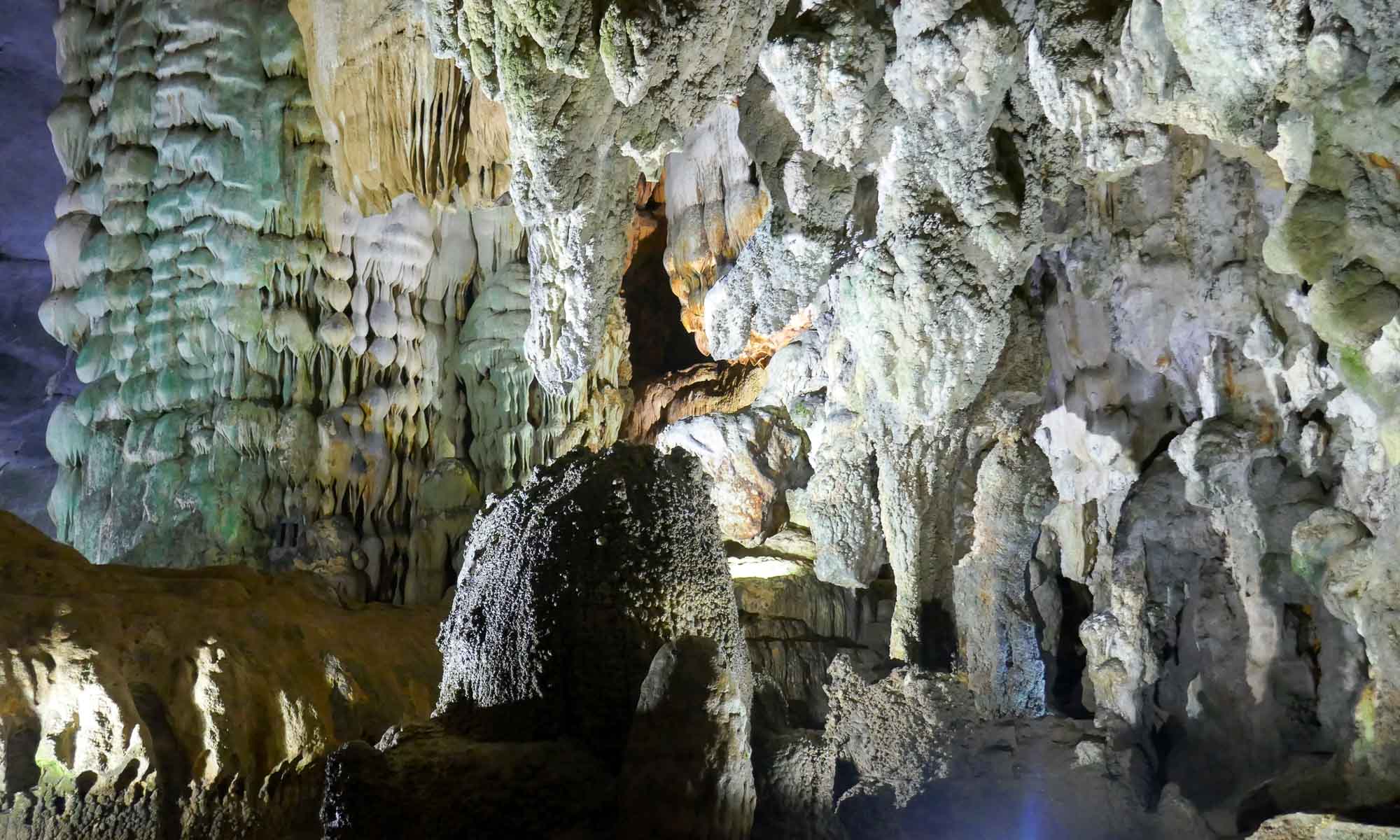
We spent about 2 hours in the cave, but the time spent is based on how long all members in the boat take, since at the end, the boat does not leave till all have assembled. If we had to select a favourite between the caves we visited, Phong Na cave would come out tops. This would also be due to the fact that we were basically alone in the cave, without hordes of tour groups!
Cave admission: VND 150,000; Boat cost: VND 360,000 (can be shared with other visitors)
Getting to the national park
We were based in Dong Hoi, therefore the drive to the park took about 45 minutes. We opted to hire a private car with driver, as opposed to going by motorbike, since we wanted to arrive early and beat the crowds. Another option would have been to stay in Phong Na (which is where our boat companions stayed) but the quality of hotels in Dong Hoi are better than Phong Na.
Private car cost: $25
Dining in Dong Hoi
Tree Hugger Cafe
After searching endlessly for a decent place for dinner, we ended up at the Tree Hugger Cafe. The cafe strives to be more environmentally friendly and has a relaxed homey vibe. Though the menu is somewhat limited we were able to have a high-quality dinner, made with local ingredients.
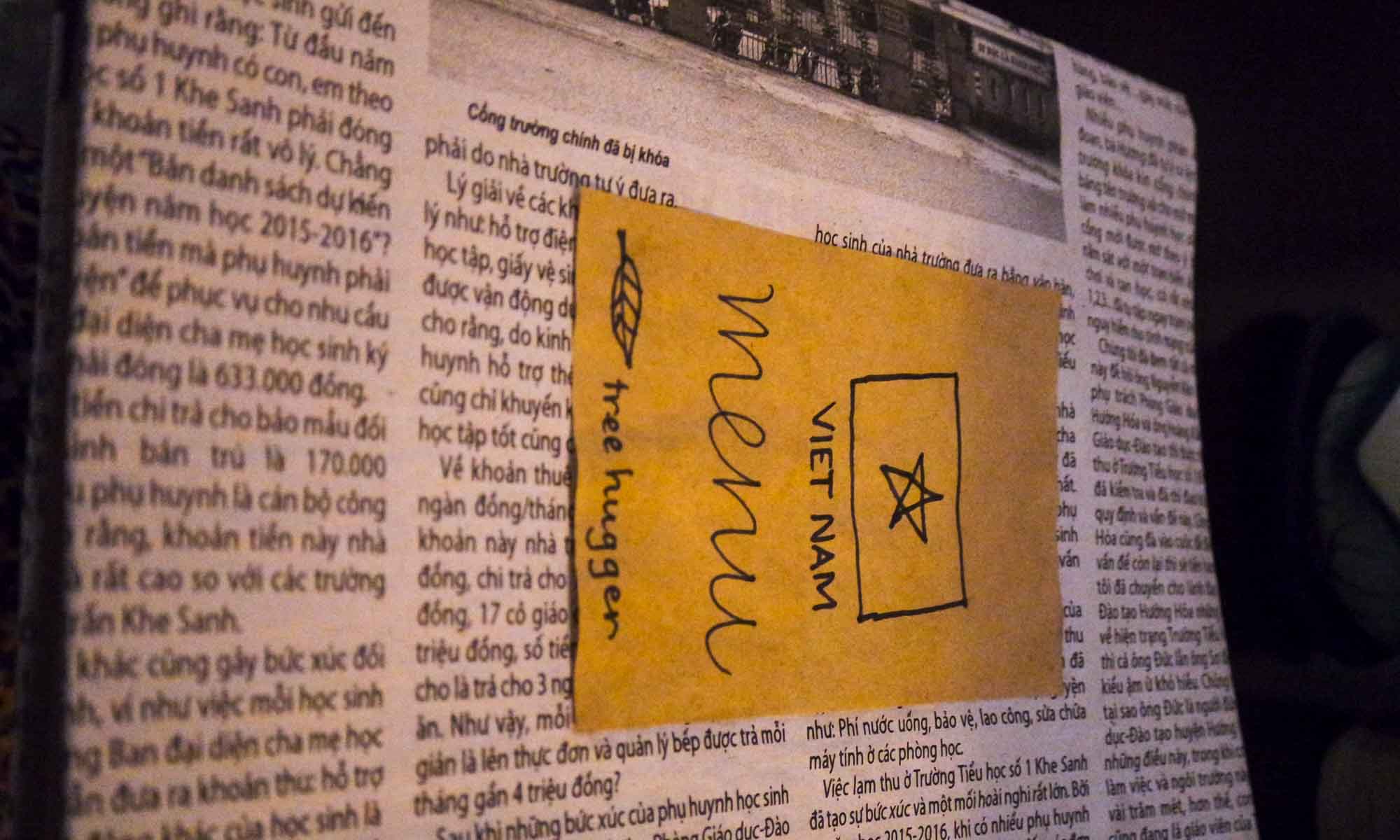
Sleeping in Dong Hoi
Riverside Hotel
The hotel is located along the Nhat Le river. From the outside, with its grand French architecture, as well as from the lobby, the hotel looks very impressive. Unfortunately, after leaving the front desk the rest of the hotel is mediocre at best, and seemed more tailored for domestic tourists. Breakfast appeared to be catered mostly to the Asian crowd. The beach outside the hotel is unfortunately not suitable for relaxing or swimming.
